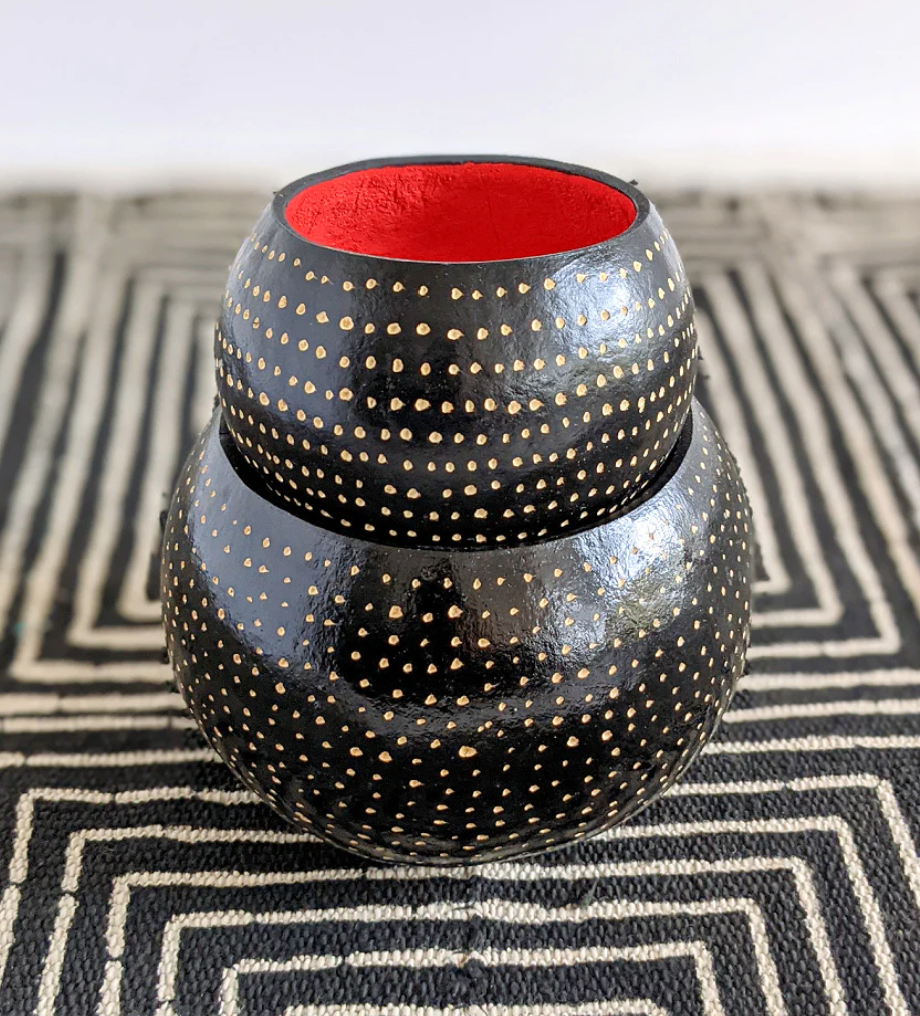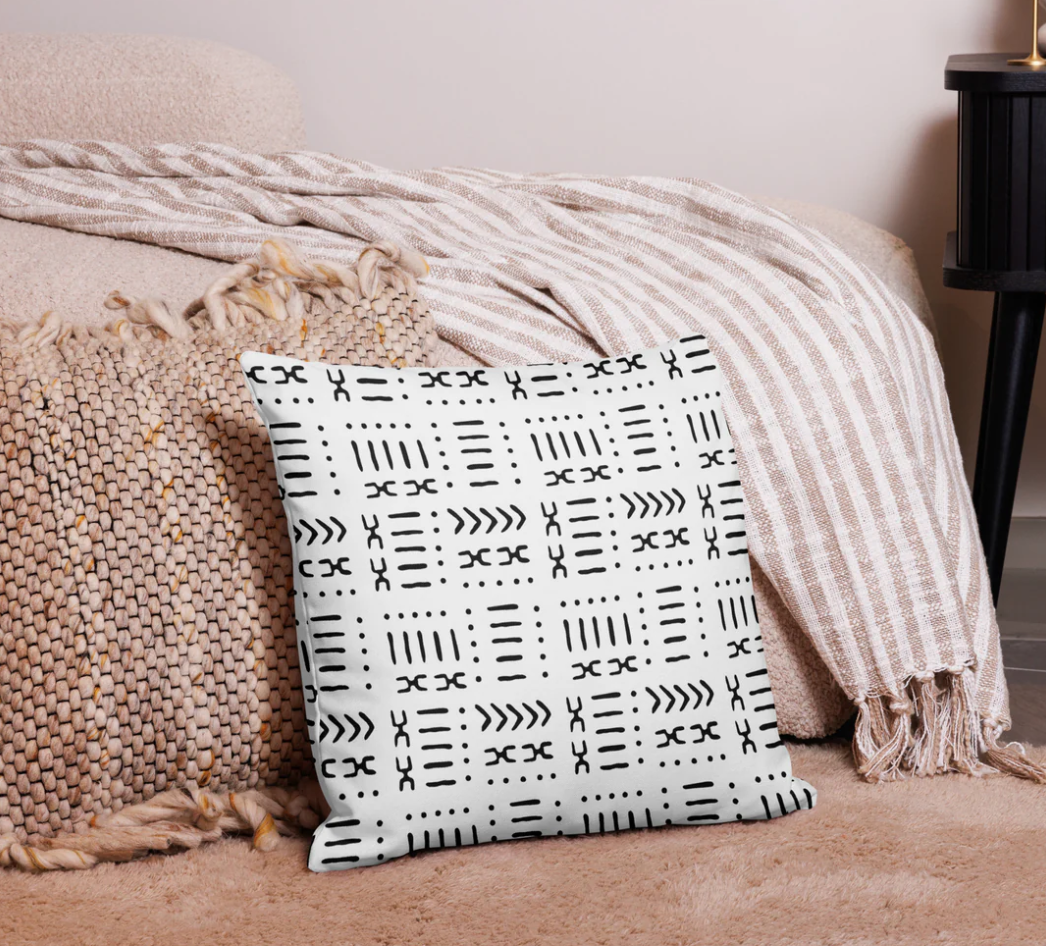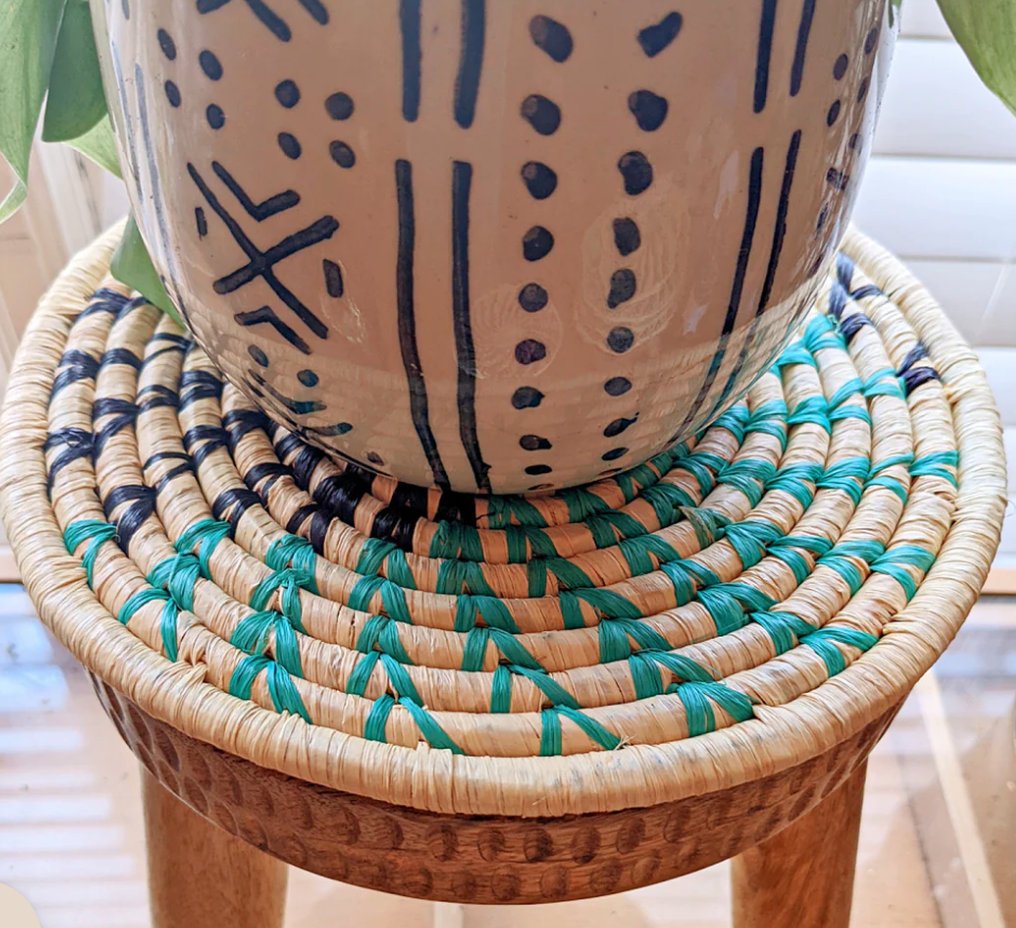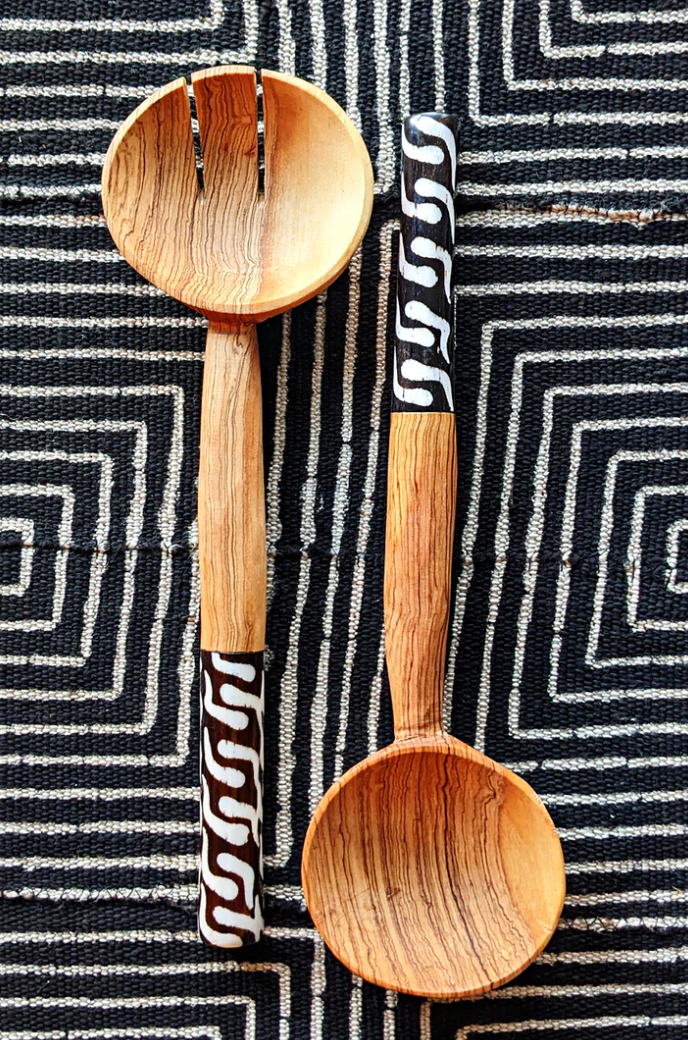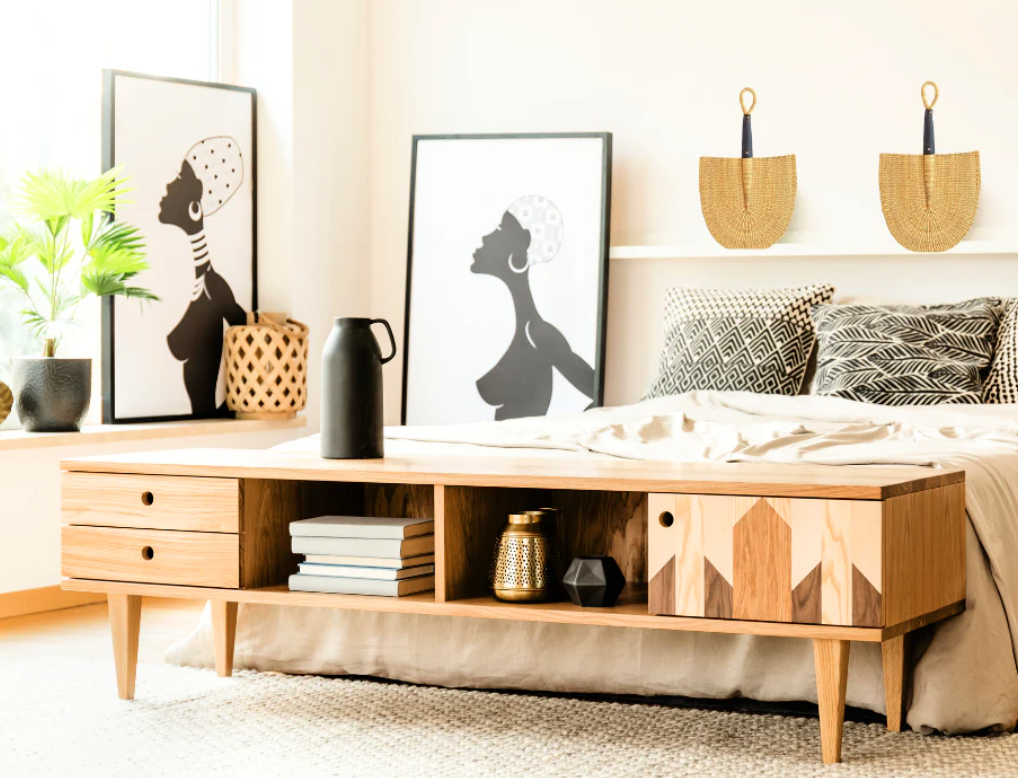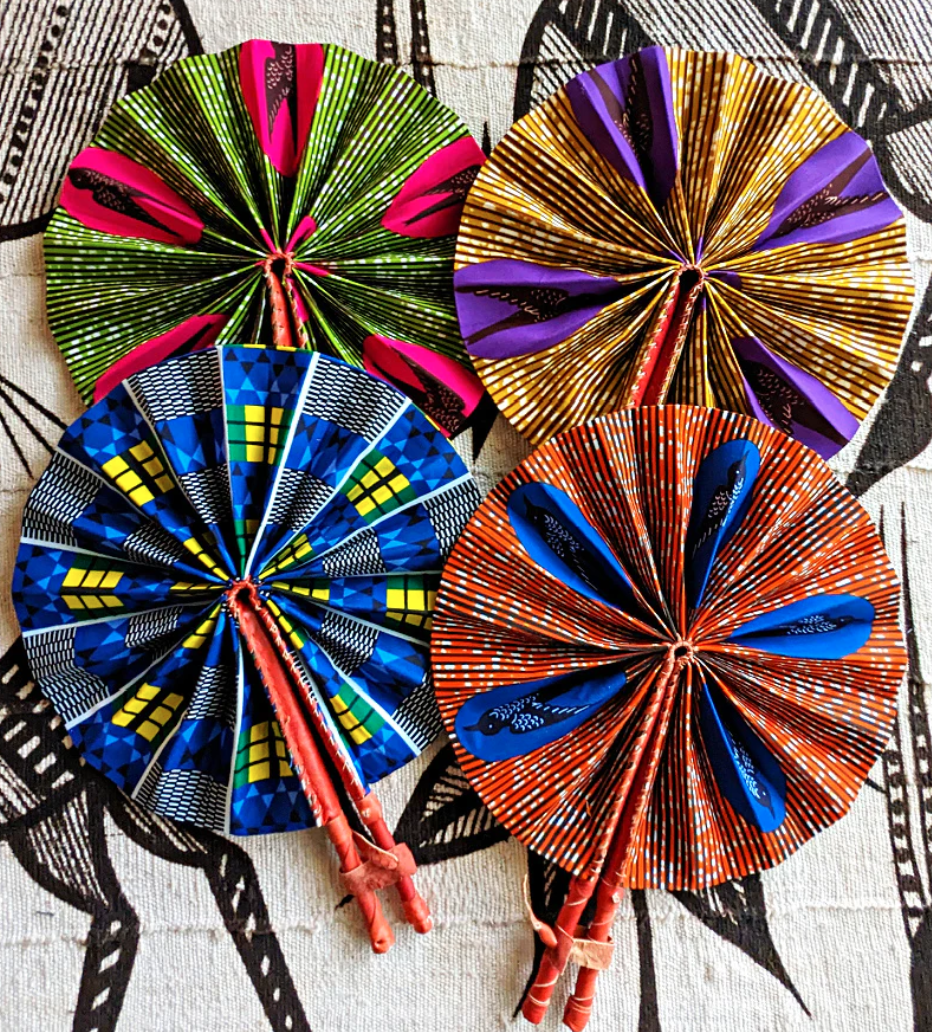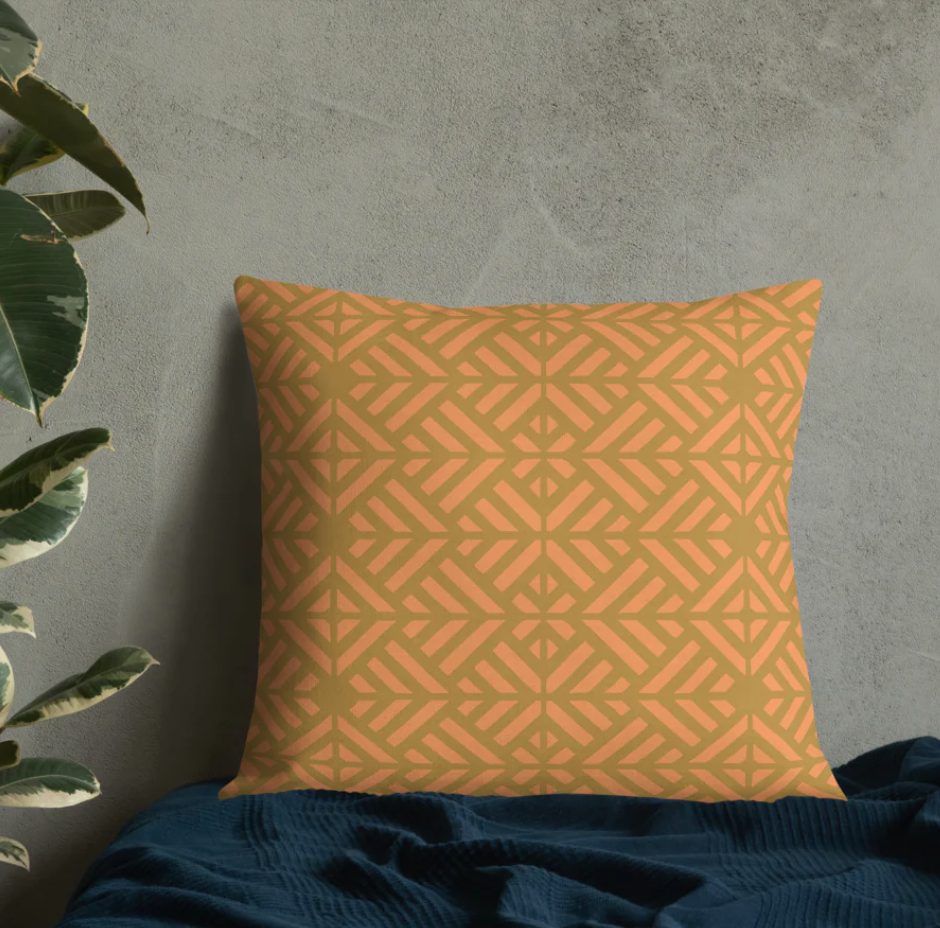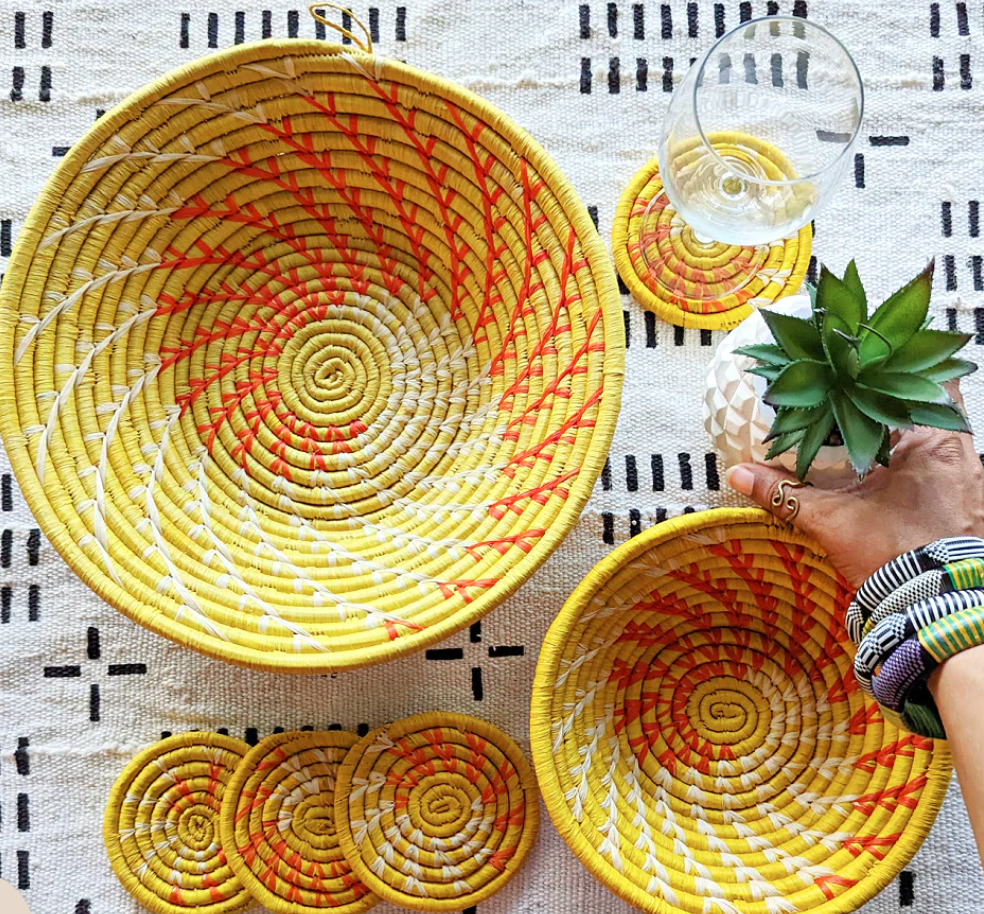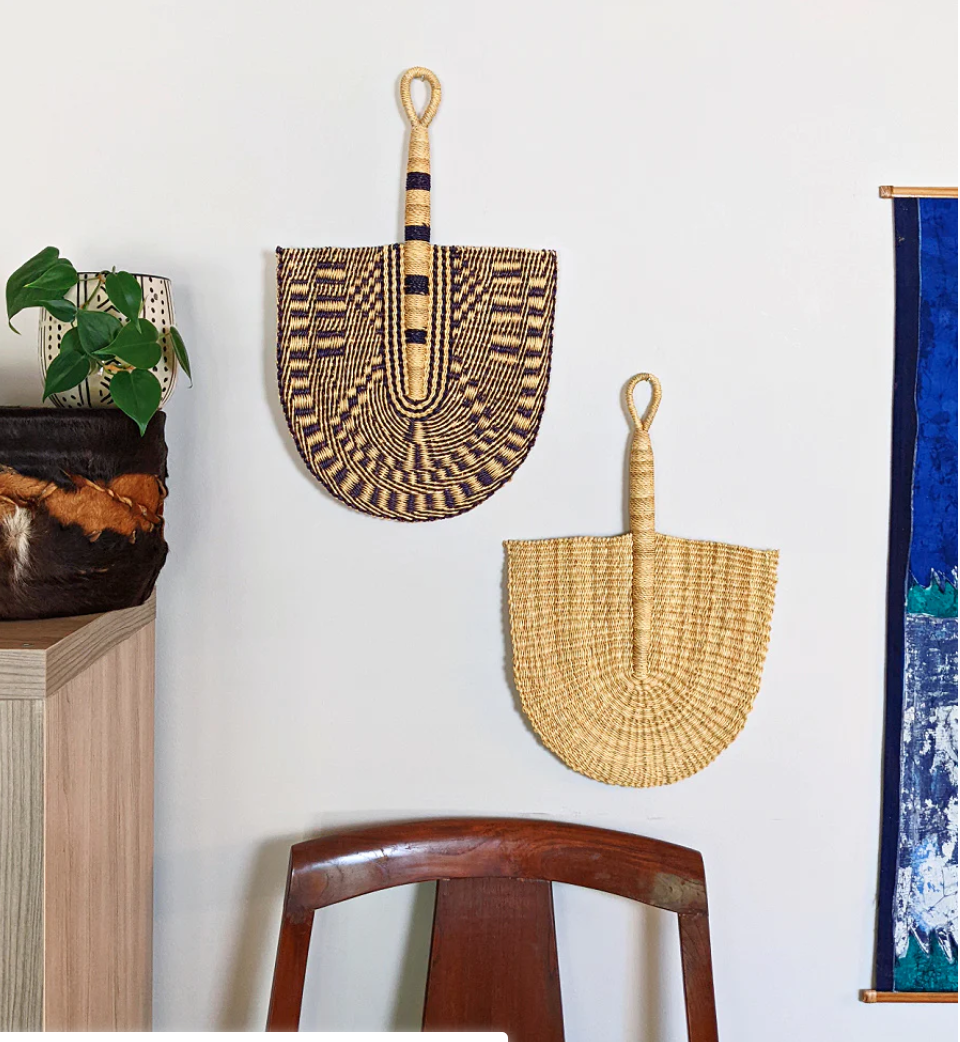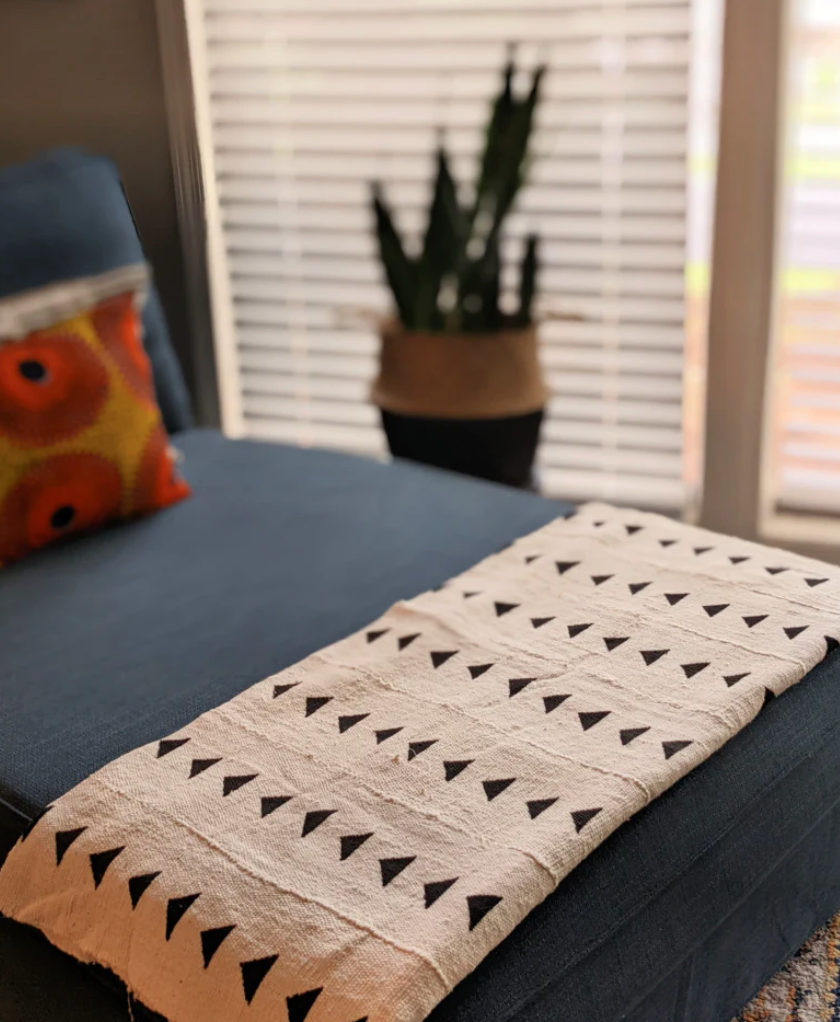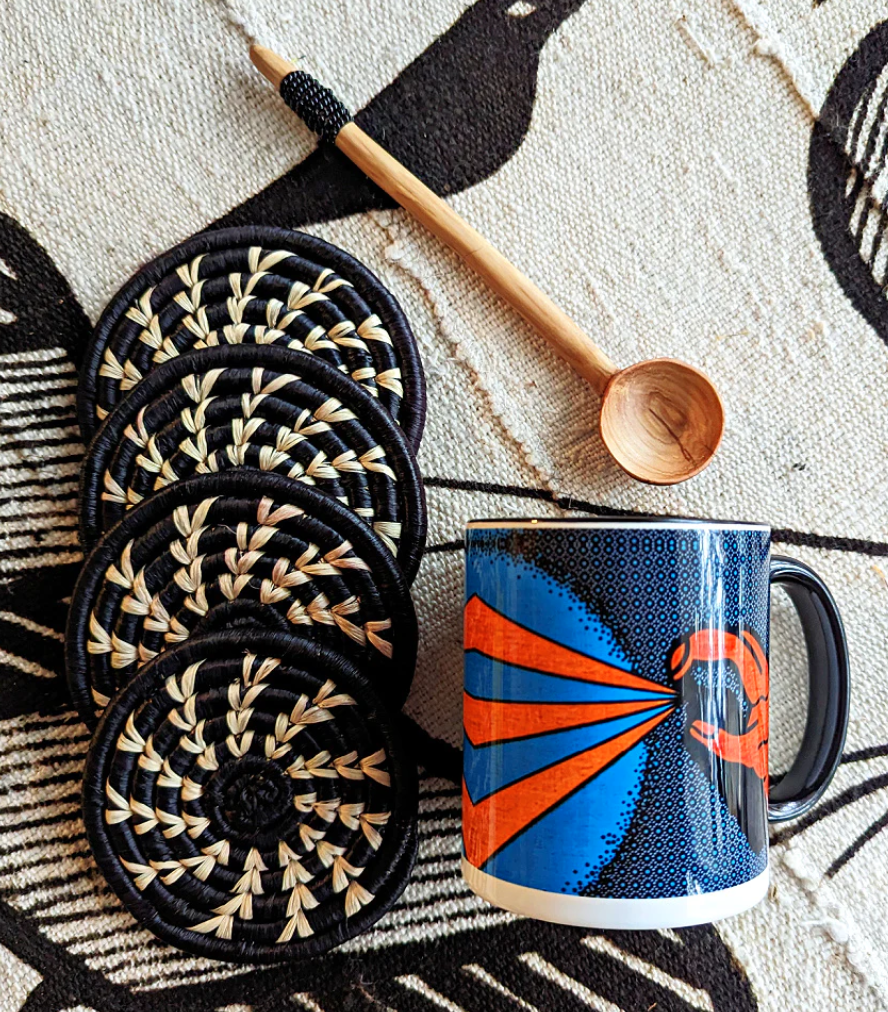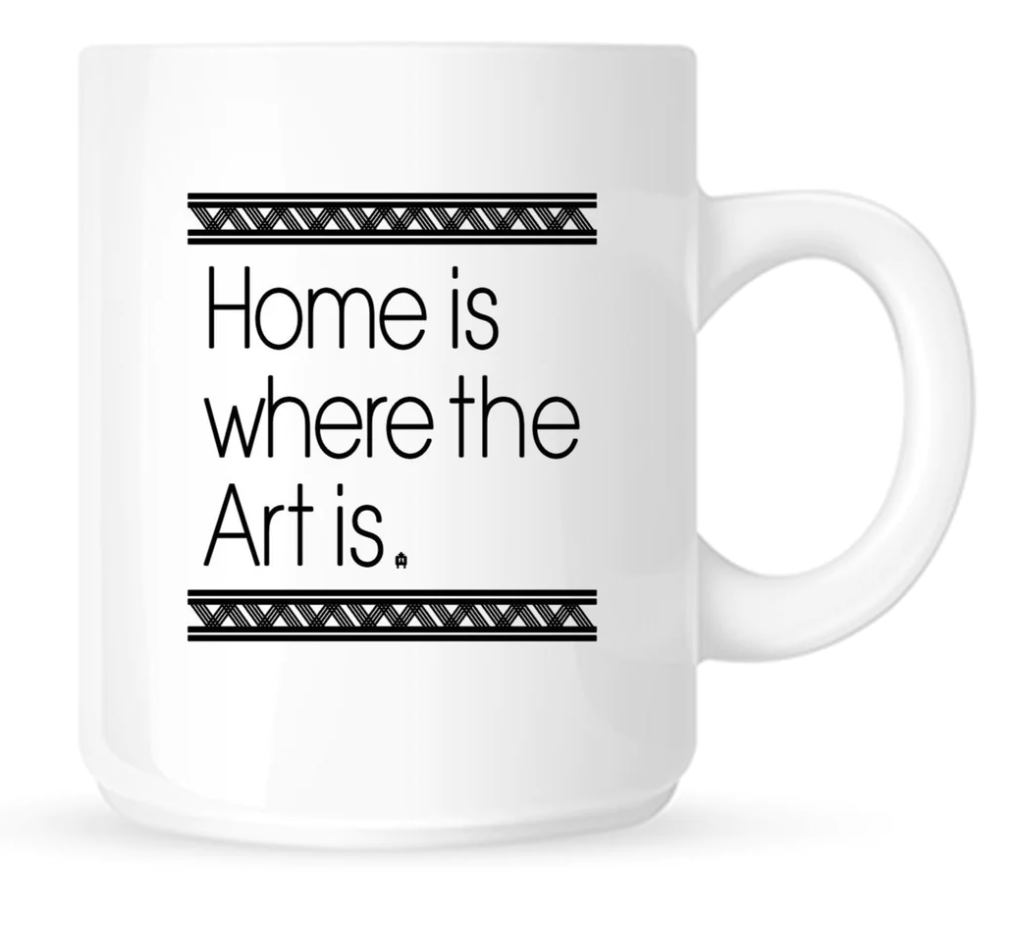Embracing Heritage through Handmade Objects with Anitra Terrell
Anitra Terrell's journey into the world of African art and textiles began during her time as a Fulbright scholar in Ghana. Her passion for authentic African art and culture, rooted in her upbringing in culturally rich Philadelphia, eventually led her to create her own business, Reflektion Design, a business that celebrates the beauty and authenticity of African art. Anitra's narrative is a testament to the transformative power of embracing one's heritage through handmade objects.
I recently had the pleasure of sitting down with Anitra Terrell, the founder of Reflection Design, an online shop that offers handcrafted art, textiles, and serving ware made by talented artisans from various African countries. Our conversation was so inspiring and enlightening; I knew I had to share it with all of you. So, grab a cup of your favorite beverage, sit back, and let's dive into our wonderful discussion.
Meeting Anitra was like a breath of fresh air. Her passion for African art, culture, and craftsmanship radiated through her words, making it clear that Reflection Design is more than just a business for her. It's a way to connect people with their roots, to celebrate diversity and heritage, and to bring joy into their homes.
Anitra started by sharing her own journey, the path that led her to create Reflection Design. As a Fulbright scholar in Ghana, she not only worked with professors to develop marketing curriculum for non-profit organizations but also had the opportunity to purchase textiles for a museum's permanent collection. This experience ignited her love for African art and textiles and planted the seeds for what would become Reflection Design.
What struck me most about Anitra's story was her resilience. She faced numerous challenges along the way, including being laid off multiple times, but she never gave up on her dream. Instead of going back to a traditional job, she chose to invest in herself and her passion, even when times were tough. It's a reminder that following our dreams requires determination, courage, and a belief in our own abilities
As our conversation continued, Anitra shared the importance of incorporating art and decor from our origins into our homes. She explained that it grounds us, reminding us of who we are and where we come from. It allows us to feel a sense of pride and connection, both to our past and our future. Through Reflection Design, Anitra aims to help individuals create spaces that reflect their true selves, so they can go out into the world feeling grounded and proud of their identity.
We delved into the significance of authenticity in art and the importance of supporting small businesses and artisans. Anitra spoke passionately about the difference between authentic pieces and generic reproductions that lack the depth and artistry of the original works. She highlighted the joy and pride that comes with owning a piece of art that tells a story, represents a culture, and supports the livelihood of talented artisans.
Anitra graciously shared details about some of the unique products offered by Reflection Design, such as the passport masks and woven hand fans. The passport masks, originally used for identification purposes, are exquisite wooden masks that represent different tribes and regions of Africa. They not only make beautiful decorative pieces but also hold a historical and cultural significance.
The woven hand fans, made with elephant grass and leather handles, are functional pieces of art. They can be hung on the wall as a gallery or used to cool oneself off during hot summer days. The craftsmanship and vibrant colors of these fans truly capture the essence of African artistry and add warmth and depth to any space.
Anitra also emphasized the growing demand for African art and the importance of supporting authentic small businesses. By purchasing from Reflection Design and similar businesses, we not only support the artisans directly but also cultivate a deeper connection to the art and culture we bring into our homes.
Reflecting on our conversation, I couldn't help but be inspired by Anitra's story and the values she brings into her work. Style and beauty, she believes, are ways to authentically express ourselves and share our joy with the world. When we embrace our true selves, unapologetically and gracefully, it creates a ripple effect of kindness, empathy, and connection.
I hope this glimpse into my conversation with Anitra leaves you feeling inspired and encourages you to explore Reflection Design's beautiful collection. By supporting small businesses and artisans, we can infuse our homes with art that holds deep meaning and tells remarkable stories.
Thank you for joining me on this journey of discovery and celebration of African art, culture, and authenticity. Remember, true style matters because it allows us to express ourselves and connect with others in the most genuine and beautiful way.
“Style is our individual version of joy. And if we would just do that genuinely, I think kindness will follow.
”
LINKS MENTIONED IN EPSIODE
Anitra is offering listeners of the Slow Style Home podcast 10% off their order through 12/26! Use code SSHOME at checkout!
https://www.reflektiondesign.com
PHOTOS PROVIDED BY REFLEKTION DESIGN
FULL TRANSCRIPT
Introduction
Zandra: My guest is Anitra Terrell, founder of Reflection Design, an online shop that sells handcrafted art, textiles, and serving ware all made from artisans Anitra has sought out in several African countries such as Ghana, Kenya, Burkina Faso, Uganda.
There are more. In this conversation we talk about how she first started collecting textiles, and the stories behind some of the objects she sells, and also the impact you can have when you know where things come from. It's all good stuff, but Maybe the best part of the interview is at the very end, when Anitra talks about why style matters.
She has a pretty fabulous answer. I think you're really going to love that part. So let's get started. Here is Anitra. Anitra Terrell, welcome to the Style Matters podcast. We've already been talking for a few minutes before we started and I already know that this is going to be a great conversation. Yes,
Anitra Terrell: I'm excited too.
I'm looking forward to
Zandra: it. Good, good.
Anitra's Journey to Founding Reflektion Design
Zandra: Before we talk about the start of your business, Reflektion Design, I want to know a little bit about how you came To this point in your life, you mentioned to me that there are lots of chapters, so I would love a little rundown, a little peek into how you became who you are today, and I know part of it, at least for the reflection design business part of it, started when you were a Fulbright scholar over in Ghana, and I think it was your interest in textiles that brought you there, is that right?
Anitra Terrell: It was actually two fold. I was in Ghana as a Fulbright scholar. At the time, I was actually as an associate professor of marketing
Zandra: marketing. Okay,
Anitra Terrell: so I was teaching at the college level and I went to Ghana to work with professors at the University of Cape Coast to develop curriculum and discuss Um, marketing within the nonprofit sector, like how to help nonprofits, whether it's museums or, you know, galleries, et cetera, schools helping them with their marketing.
So coming up with ways to develop curriculum around that. So that's what got me to Ghana. Once the word got out that I was traveling to Ghana, a friend of mine who is. And a consultant was, was working with a, um, large museum at the city that I was in at the time and, uh, told them that I was going and they reached out to me and said, can you purchase textiles for our permanent collection?
Zandra: You're kidding. Oh my gosh. While you're there. That's quite a big ask. Okay. Of course. I said, yes. Yes. I mean, that's so exciting.
Anitra Terrell: Yeah. So exciting. So I would spend my mornings. In academia and my afternoons and evenings in the marketplaces and artists and communities, um, purchasing textiles, learning about textiles, negotiating for pieces.
And so it was. It was an amazing experience that I was able to, um, activate kind of both sides of my brain, so to speak. Yeah. From a creative standpoint and also from a curriculum
Zandra: development standpoint. Okay. So here you are in Ghana, you are falling in love with these textiles, even though you didn't really have, that wasn't necessarily part of your world.
before this, then what happened? Because that's kind of, there's a lot that must have happened between then and where you are
Anitra Terrell: now. Right. So African textiles and art and culture was always a part of my life in a sense that I'm originally from Philadelphia. And, uh, as you may know, Philly is known as a very culturally rich city.
Lots of museums from the murals that the city is famous for. Um, many artists that come out of that city. There's lots of festivals that happen every year. The Adunde festival, for example. It was always a part of who I am. Um, but career wise, I hadn't pursued it, but interestingly, I had always. You know, I went to school for, for business, you know, bachelor's and MBA in marketing, but I always geared my interest in marketing towards the arts.
Huh. Okay.
So, um, I would, I would have these amazing short term experiences in the arts, but then I would continue to go on to the more traditional career path. I continued in higher ed for a while. And then I ended up transitioning to doing more, um, talent acquisition and recruiting. Huh.
Okay. I ended up being laid off. Fast forward to around, uh, 2013
Zandra: when everyone was getting laid off.
Anitra Terrell: Yes. Yes. And so I ended up getting laid off and I took it as a sign that it was time to forge my own path instead of a setback. Yeah. But in order to figure out what the next step would be, I decided to sit still and think about what were the happiest moments in my life.
Where was I, who was there, what was happening, et cetera. And the trip that I had taken to Ghana a few years prior kept coming up. What do I do with that? And I still wasn't a hundred percent sure until one day I was in the store shopping for bedding. And I saw a lot of nice things on the shelves, you know, you go to the store and like, Oh, this is nice.
And so, you know, but nothing that really resonated with me, nothing that really reflected my experiences, uh, who I am, my, my lifestyle. And that was the light bulb moment. Yeah. That was when I decided this is how I can share my love of African art and
Zandra: textiles. You know, you make it sound simple. I'm sure it hasn't been all simple, but you make it sound like when you, when you sit quietly and you figure out what brings me joy and to fall and to be brave enough to follow that.
I mean, it, it, it's all, you know, the dominoes have lined up and, and here you are. Yeah,
Anitra Terrell: it certainly was not easy.
The Challenges and Triumphs of Starting a Business
Anitra Terrell: I'll say that now because I started a business. After being laid off, you know, just to put that in context. So I had savings and a wing and a prayer.
Zandra: Yeah. And the savings you're probably thinking, this has got to be for rent, not for put or my mortgage, not for, uh, putting into my business.
Right. I mean, you, you were, you were, but you did, you put it into your
Anitra Terrell: business. I did. And that lasted maybe about two years and eventually It got to the point where I said, I have to go back to work because savings are exhausted and I can only reinvest what I am making. So I ended up getting a job and.
Uh, working my reflection design part time and believe it or not, about six or so months, seven months, but well, a few months into that job, I was laid off again. Oh no. Oh
Zandra: God.
Anitra Terrell: True story. So I said, all right, I'm going to go back to my business. I'm going to make this work. And I did. And it was another, maybe a year and a half of trudging along.
And again, I got to that point where I said, okay, it's. It's lean times again. I got to go back to work. And I went back again, different job. And once again, You did not get laid off again. I got laid off again. Company decided to relocate offices, moved outta state. Oh geez. And bam, unemployed. So this is three times.
Wow. True story. Three times. And after the third time I said, you know what? This is truly a sign that going back to work is not the answer. Yeah.
Zandra: Right. Well, that's one way to look at it. That's the way to look at it when you want to be following. The joy and, and having the life that you want to create, but that it takes a lot of guts.
Yeah,
Anitra Terrell: it was, it was a very trying time because you start to question everything. You question your business, you question yourself, you question your employability.
So my gosh, yeah, I said, after I, after the third time I said, that's it, I'm not going back. And I haven't gone back since. And that was probably about 2018,
Zandra: 2018. Oh, congratulations. I mean, you are meant to be doing this. I know it. And I just, I'm very inspired by your, your resilience, your Uh, perseverance, um, I, I think all of us who are trying something and are passionate about it, whether it's a job or not, um, uh, are going to be inspired by this.
It's, it's, it's very comforting to hear considering, you know, how beautiful and wonderful your business is at this point. Um, I want to, I want to jump into.
The Significance of Reflektion Design's Logo
Zandra: The name of the company, Reflektion Design, and specifically the logo, because I read somewhere it might've been on your blog. I'm not sure that the imagery and the logo are actual symbols and and they translate translations.
I want to know what they mean to you. What do they represent for your company?
Anitra Terrell: Sure. So thank you for asking that question. You're right. There are symbols in the logo. They're called Adinkra symbols, and Adinkra symbols originate from the Akan people of Ghana. And so at the top of the logo, You'll see it kind of looks like, uh, almost like a person with a hat on.
Yeah. Um, or it might look like a hat or a house. I should say. The name is Jiwa Ani, which translates to enjoy yourself. And the symbol represents, uh, the joy of living. The horizontal symbol that goes across the center of the logo kind of looks like crisscross lines. That symbol is OO40Adobe. which translates to ingenuity or persistence.
Zandra: Okay. Well, there we go.
Anitra Terrell: Yes. Yes. And it refers to a snake climbing a raffia tree or, or any type of, uh, dangerous endeavor that requires ingenuity and persistence.
Zandra: Right, right. Those are just two beautiful symbols that, that definitely encapsulate your story so far. I mean, yes. The, the, the, the complete joy that I see coming out of these photos of, of the products that you're selling, the vibrant colors and the craftsmanship, uh, they're, they're just.
They're so beautiful. They're so happy looking. And, and then, and then this, this climbing the, the raffia trellis or whatever it is that, you know, to get to where you're going. I mean, I guess we need both of those things in our lives. We need the ability to persevere during COVID 19. the tough times or the lean times, as you've said, and we also need and deserve beauty.
I think no matter what's going on, we all as humans deserve beauty.
The Importance of Authentic Art and Craftsmanship
Zandra: So we're going to start digging into the reason why you have gravitated toward the products that you sell and the, the artisans that you work with. Having one's ancestry or country of origin represented in a poem, I think is. It's one of the best ways to decorate in that, in that you're really sharing a piece of yourself with whomever you're bringing into your home.
It's very personal. What do you love about it?
Anitra Terrell: I think having art and decor from your origins, I think it grounds you and it reminds you of who you are and where you've come from. It also reminds you of the beauty. Of who you are and where you come from the artistry of your origins, so to speak. And what better place to feel grounded and feel inspired than at home?
Yes. Um, I think that's the first place we should feel. A sense of pride and a sense of connection to the people and places that, that make up who we are from, uh, from our ancestors to our immediate family, you know, we have pictures of our parents or our children or nieces and nephews in our home for a reason.
That is our community. That is our lineage. That is our, our connection to our past and our future. And so I think it's important to represent yourself at home so that when you leave home and you're out in this world, you, you feel grounded and you feel a sense of pride because you're, you see yourself, which is what reflection design is all about, seeing yourself at home.
So that when you go out into the world, you feel that much more grounded, that much more, uh, filled with pride and that much more connected to who you are and where you come from.
Zandra: I can't believe I'm going to say this, but I never put that together. Reflection, the name of your company with this idea. So you can see yourself.
In your most, you know, sacred and safe space, if you can see yourself when you go out into the world, that is, that's, that's pretty powerful and wonderful, you know, I think a lot of us started becoming, you know, ancestry. com and all those, those websites. They started, it became like really popular all of a sudden, I guess, because when, you know, I mean, being able to be on the internet and all this technology that we all have now, people started really getting into trying to trace.
from, um, and, uh, yeah, I, that's what I love about it. It's just, there's just so many stories packed in there. So continuing on with this a little bit, since building your shop, you've, you've expanded, you know, you started in Ghana, you started with artisans in Ghana and, and I assume you started with, with fabric, but now you have other things coming in from Ghana, but then also you've expanded to Kenya, Rwanda, Uganda, and, um, I'm just curious, like, are you following your own curiosity about art, artisans, culture, or, or is there something else that's driving where you decide to pull from?
Anitra Terrell: Well, it's kind of a mixture of what I was saying earlier, you know, pulling from both both sides of my mind. I have the creative side that's in an ideal world would have something in, in the store from every country on the continent, if that was possible, but I also wear my business hat and that's my, you know, that's my training.
That's my education. And so I have to be, to also be very mindful and very strategic. Um, I, I did start with pillows. And eventually expanded to tableware and then baskets. And then it ends up growing into a couple of accessories. I have earrings as well and hand fans on the site. Uh, but it's important for me to, to grow intentionally purposely, but also, you know, understand what's going on in the market.
What are customers asking for? So finding a way to, to marry
Zandra: the two. So what are you hearing along those lines? Like, what, what do you think people are looking for? Art
Anitra Terrell: has become, which I'm like, yes, finally. I
Zandra: want everyone to buy more art, more real art. Okay. Keep going.
Anitra Terrell: Yeah. So art has become the in demand product, whether it's, uh, baskets.
Whether it's, uh, the woven fans, whether it's actual wood masks, whether it's, uh, art prints or paintings, any form, figurines, uh, any form of art, people are clamoring for it and I love it because I've been, been, been campaigning for art for the longest. Like, come on, people,
Zandra: I know, I know. Well, we have to have a whole other conversation about that at some other time, because that that's like a personal goal of mine through the show is to help people not feel intimidated by it.
And also understand the value of it so that they, that they, that they are. You know, that they invest in it. I mean, it's, it's, it's just, it's life giving inside a home.
Exploring the Products of Reflektion Design
Anitra Terrell: It really is.
Zandra: I want to talk a little bit about some specific things that you sell. Just to give an example of what we're talking about in terms of that depth of story, tell us a little bit, a little bit about the passport masks that I realize are sold out at this point, but I Just loved reading about these.
Anitra Terrell: So I'm working on getting more first and foremost. Um, yes, the passport masks are, they're about. About five to seven inches in length, so they literally can fit in the palm of your hand. They are made of wood and often hand carved wood, and often there's a resin or a material that is kind of sanded onto it to create the colors.
And the passport masks were the original form of identification. So before there was driver's license, like probably centuries before there was driver's So a mask was created to identify, um, what tribe or region of the country the individual was from. So as they traveled throughout either their country or going to neighboring countries, they were able to present the passport mask to, show where they're from.
Zandra: It's just so cool. And that, so that must also mean that many different tribes were doing this because, you know, it was recognizable as a thing whenever you would meet somebody from a different tribe.
Anitra Terrell: Yes. Yes. So many of the tribes would create their own masks. So it would be easily identifiable because sometimes there might be a language barrier, but at least visually you would know, okay, this is where.
The person is from, and so I usually offer them in sets of three because they are smaller. Um, and we all know three is that magical visual number. Um, and so, um, I offer them in sets of three because they're smaller. So you're able to create more of the drama, more of the experience when you have three of them together versus, uh, just one of the particular ones.
Passport masks that I sell are made in the Democratic Republic
Zandra: of Congo. Okay. And I get a little bit of chills when I think about this because we're talking about passports now. We're talking about, um, you know, a vaccine passport possibly, or we're just even talking about the ability to finally travel again and needing our passports.
And, you know, what you said earlier about, um, All of this time we've been spending at home and and how we've done a lot of self reflection I think and and we're we're seeing our homes. reflect who we are. And sometimes we like what we see, and sometimes we don't. And just being able to connect that to this idea from centuries ago of these visual, you know, little pieces of art that, that represented who the person was.
And to have that kind of, I don't know, in my home while I'm also kind of on the, on the other side of COVID, it just, it's just cool. I just, I love, I love when things find those weird connections like that.
Anitra Terrell: Well, it reminds us that. Things change, but they also remain the same.
Zandra: Yes, that's right. That's right.
Um, okay. Another thing I want to ask you about are the things that I keep talking to about that I'm absolutely in love with. And that's these fans. Um, the ones from Burkina Faso, I really love, but you have some new ones, at least new to me that are, I think from Ghana. Um, they're, they're, they're, you know, woven fans that the people would hold in their hands to cool themselves down.
Can you tell us a little bit about how those are
Anitra Terrell: made? Yeah, so these are probably one of my most popular items in the shop, and it's easy to see why. The woven hand fans, they're, I call them functional pieces of
Zandra: art. Yes, good way to describe
Anitra Terrell: it. Because you can create a whole gallery wall of fans. You can, you know, get a bunch of them and hang them on the wall.
Um, and they add so much warmth and depth because they're woven with elephant grass. So you get that texture, um, and they also have leather handles. So you also get that warmth from the leather, but also the texture from the elephant grass and they're made in. All kinds of colors and styles. You could go very neutral with the navy blue and a natural or you could go wild with, you know, a fan that's made with purple and orange and green and yellow.
Um, but if you're hot, you can also use that puppy to fan yourself off.
Zandra: Absolutely you can. I mean, I would totally. I wouldn't just keep them on the wall. That's just where I would store them when I'm not using them. Exactly. And the colors, these are all natural dyes as well? Yes. Oh my gosh, the colors are unbelievable.
Um, I'm, I'm actually currently trying for the very first time to weave a basket. I, I, every once in a while, I feel like I get so much of my work is on the computer and every once in a while, I just want to do something that's fun and creative with my hands. And so this, this time around, it was weaving a basket and oh my gosh, I mean, I already had respect for weavers, but wow.
I mean, this, the, these patterns that they do are absolutely incredible. So I'm excited. Okay. One other thing that I want to ask you about kind of segue into another question here. I'm guessing that when you see reproductions of this, what I would call generic African art, like you don't even, it's so generic that it's not even clear what specific country or tribe it's trying to emulate, but you see, you know, we see them a lot now that they've gained a lot of popularity because, uh, people on Instagram or Pinterest with these gorgeous homes who have traveled maybe.
or bought some things from artisans and now they've got them on their walls. And so now, you know, all the big, all the big producers copy this stuff. Right. And one of the ones that, that I think I I've been seeing for a couple of years are handwoven baskets, which we were just talking about. Um, I remember seeing a wall of them in, in a hotel in South Africa that was just, I mean, it was a huge tall wall and it was just absolutely stunning.
And now, you know, you kind of see baskets and, and. I want to know, I want to give you a chance to tell us why, you know, why should we not buy those? Why should we try to seek out the real thing? This
Anitra Terrell: topic is a tricky one to navigate. It is.
Zandra: And believe me, I have to say to everyone, like, I don't ever want to come across as a snob.
I shop at Target too, right? But keep going.
Anitra Terrell: You should definitely start with and support businesses that sell the authentic pieces. I think it's the right thing to do and I think nowadays with technology, it's very easy to find them because often that's the first go to response. Well, I don't know where they are.
I think nowadays it's very easy to find them, whether it's through Instagram, whether it's through Google search, whether it's through Pinterest, look for. Businesses, which are typically small to medium sized businesses that sell the original art, whether it's a basket, whether it is, you know, table napkins or, or, you know, wooden, olive wood, coffee spoon, um, start your search there.
And because not only are you supporting that small business, you're also supporting the artisans who make all of this beautiful work. And I think as more people do that, they'll see the difference. They'll see the difference in the quality. They'll see the difference in the artistry and They may decide, you know, I don't want to go to a large retailer.
Once they have that experience shopping small and supporting artisans, they won't want to go to a large retailer. You as a, as a shopper, you have much more of a direct connection, a touch point to actually supporting small businesses and also supporting the artisans when you shop
Zandra: small. Yeah, I think people sometimes feel a little overwhelmed with all of the, you know, the, the major problems in the world.
What can I do? How, you know, what, what can little old me what, you know, how could I possibly have an impact? And, uh, you're absolutely right. I mean, this is a much more direct way of. impacting an economy, um, both where you, you know, where you're buying from, but also where the product is coming from than any other way, especially if you can't travel there.
You know, I used to feel kind of weird about wanting to pick something up from a country that I'd never been to, like it felt inauthentic to me, right? And so for instance, I've never been to Burkina Faso, but I, I would love to still have Something from that country, that culture that I can start to understand that I could start to learn about, um, because it's so easy visually to appreciate what, what it is, but to also know the story behind it and to start to understand how it's made and why.
And to me, that's just, that's the reason to buy from. from you, um, and to support these artisans. It's just, it's so much more fun, really. I mean, it's fun. It's not just deep and meaningful. It's just fun.
Anitra Terrell: It is fun. And the closer you are to the artisan, the more likely you are to learn more about the item.
So as you're going on this fun exploration. Why not get as close to the source as possible?
Zandra: Yeah. All right. Last question.
The Impact of Style and Beauty
Zandra: And this is my signature question that I ask all my guests. So my audience knows exactly what I'm going to say next. Anitra, why does style matter?
Anitra Terrell: Style and beauty matters because it is our internal shared externally.
It is the, is the most confident way that we can share how we feel on the inside. Externally. And the more opportunities that we have to, to show how we feel and who we are and how we represent ourselves, I think the happier we'll be as individuals, but also as a collective, as a community. As a nation, the more we're able to be who we are unapologetically, not only be okay with it within ourselves, but have others okay with that too.
Like let's all be who we are. Let's not suppress it. Let's not shy away from it. Let's embrace who we are and show it every chance we get. What better way to share our version of joy? You know, I think style is our individual version
Zandra: of joy. And if we would just do that genuinely there, you know, I think kindness would follow.
If you're vulnerable with somebody and sharing, you know, some pieces of who you truly are, then hopefully that opens up a bit of empathy and, and then, you know, the chain goes on and on. At least that's the, that's the hope.
Anitra Terrell: Absolutely. I think, A lot of the, the, the uneasiness that we have within ourselves, the wrestling that we may have within ourselves is because we are trying to conform to some other narrative that's not ourselves.
Style matters and beauty matters because we, we need to ease that friction and be who we are. And the more that we are at ease, the more we can be listening, be willing to listen to others and be willing to engage with others because we're not battling ourselves internally. When you're free inside, you're free to listen to others and be present for others when you're free and present within yourself.
Zandra: This has been my favorite part of the interview. Thank you. That is such, that is such a great response to that question. Sometimes the question is really hard, you know, it's very, um, you know, it's not very concrete. So, um, well, that was really beautiful. Thank you so much for sharing that with us. And thank you for your time today.
I truly appreciate it.
Anitra Terrell: Thank you. I've enjoyed talking with you so much. I really appreciate
Zandra: it.



